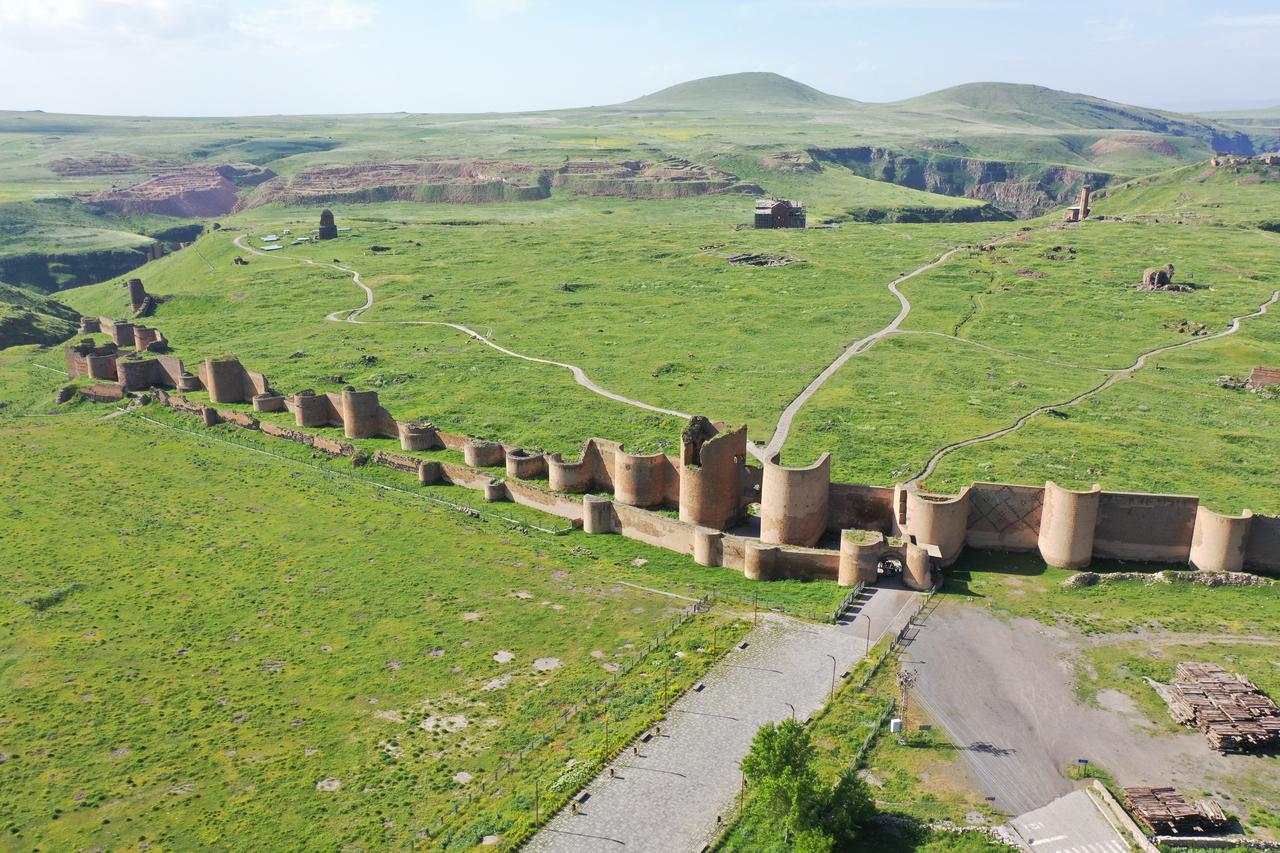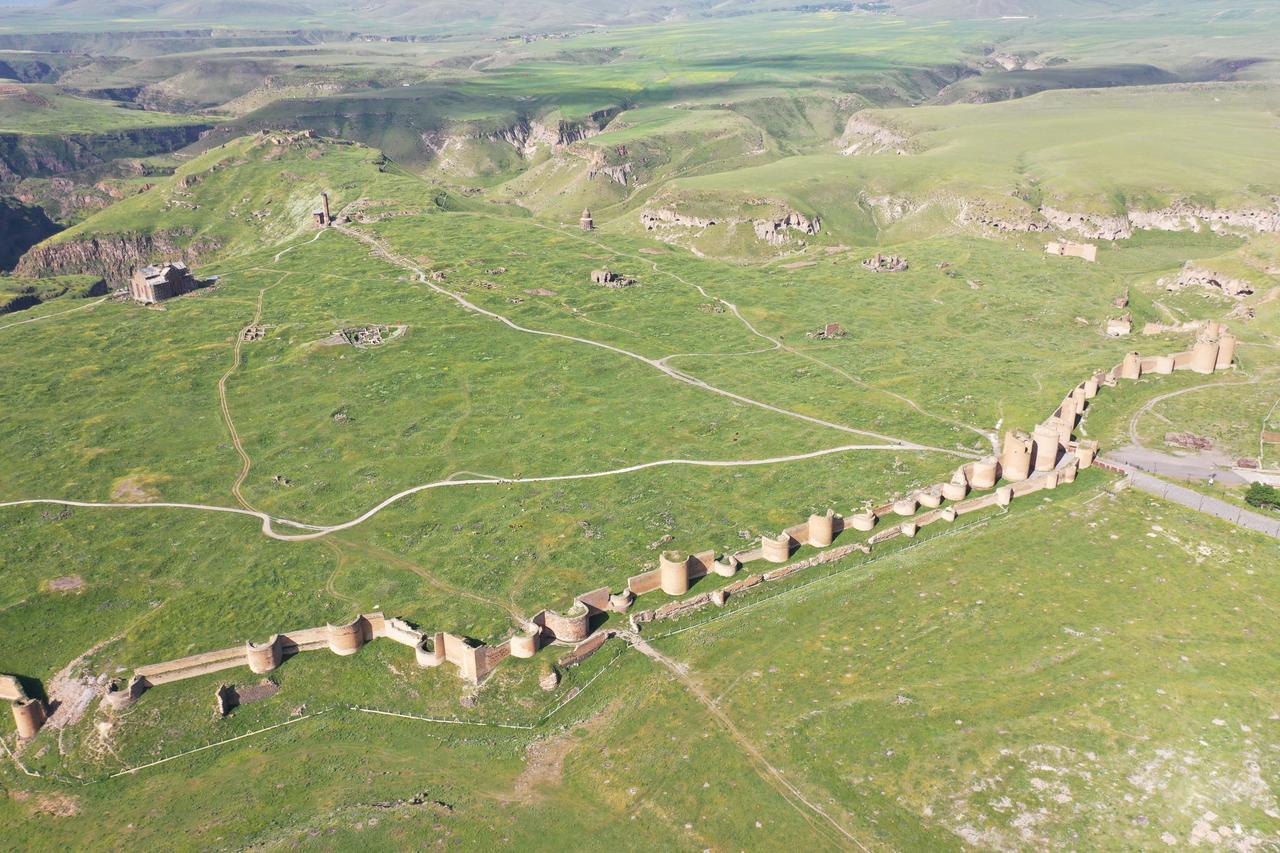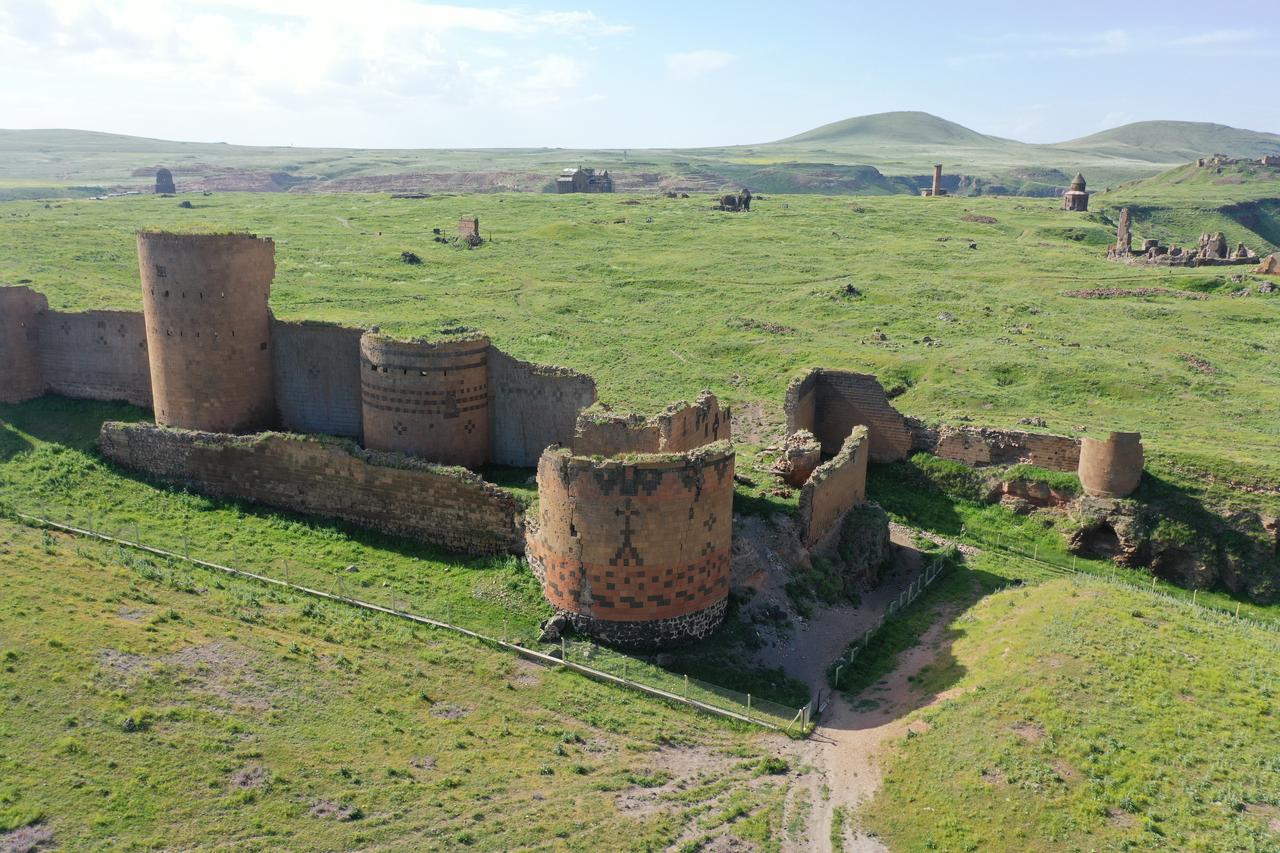
Nestled in a valley carved by the Arpacay River in Türkiye’s Kars province, the ancient city of Ani captivates with its enduring grandeur. Once ruled by the Bagratids (884–1045), Byzantines (1045–1064), and later conquered by the Seljuk Sultan Alparslan in 1064, Ani has served as a crucial stronghold in the historical landscape of the Caucasus and Anatolia.
Founded across roughly 100 hectares, Ani witnessed the passage of many great empires — from the Bagratid Kingdom and Byzantine Empire to the Seljuks, Mongols, Ilkhanids, Karakoyunlus, Akkoyunlus, and the Ottoman Empire. As a result, it has earned evocative titles such as City of the World, Cradle of Civilisations, City of a Thousand Churches, and City of Forty Gates.
Today, Ani is home to a treasure trove of architectural marvels, including mosques, cathedrals, and churches that echo the coexistence of Christian and Muslim communities in its storied past.

Declared a UNESCO World Heritage Site in 2016, Ani attracts thousands of local and international visitors annually. Its strategic position made it the first entry point from the Caucasus into Anatolia, and it stands out especially for its 11th–12th century Turkish-Islamic architectural heritage.
Among the most prominent features of Ani is its still-standing 5-kilometre-long city wall — an enduring testament to medieval military architecture. Built in the 9th century during the Bagratid era, parts of the wall were constructed as double-layered fortifications, with intricate stone carvings bearing the symbols of past civilisations.
Speaking to Anadolu Agency, Associate Professor Muhammet Arslan, the head of excavations at Ani, emphasised the city's unique value: “Ani is one of the most important cities of the Middle Ages, both in terms of visible surface structures and undiscovered underground architectural remains.”
The walls, Arslan noted, suffered their most serious damage during the 1064 siege by Sultan Alparslan against the Byzantine forces. But in a symbolic act of restoration, the sultan immediately ordered their repair. A commemorative inscription placed on the Aslanli Kapi (Gate of the Lion) is considered the first Turkish-Islamic inscription in Anatolia.
Despite the passing of nearly 1,000 years, Ani’s fortifications remain remarkably intact.
“The northern walls, facing the plateau, were built as double-layered structures. In other directions, where rivers like Arpacay, Migmig, and Bostanlar run, single-layered walls were constructed. The entire fortification stretches for almost 5 kilometres,” Arslan added.

Ani’s walls are pierced by seven historic gates, each holding cultural and strategic significance: